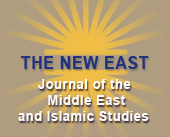Like Footprints in the Desert: Territorial Boundaries and Migration Processes among the Negev Bedouin as reflected in Burial Patterns, 1800 – 1966
Emir Galilee, Ruth Kark and Gideon M. Kressel
This article deals with the processes of migration of tribal units in Bedouin society during the 19th and the 20th centuries and their reflection in burial patterns.
Within the context of a geographical and historical analysis of cemeteries and their tribal attribution, we determined the location of Bedouin tribal units for a period spanning from 1800-1966. We focus on one case study of the Dulamm tribal federation and its migration from the Negev highlands in the central Negev to the Arad Valley in the northeastern Negev. The location of the cemeteries and their tribal affiliation reflect perceptions of tribal identity, territory and migration processes in a tribal-nomadic society. We analyze the debate between tribes about tribal patron age, origins and administrative definitions. In addition, we examine different modes of tribal territorial division mirrored in the cemeteries which serve as part of a system of different territorial markers.

